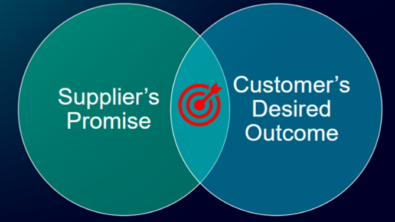Q&A: Application development platforms – a partner’s perspective

A Q&A session featuring:

Dave Weinand
Chief Customer Officer
Incisiv

Remi Duquette
Vice-President Innovation & Industrial AI
MAYA HTT Ltd.
Maya HTT, an industry-leading software developer and engineering solutions provider focused on CAE, CAD, CAM and PLM, is a longtime partner of Siemens Digital Industries Software and collaborates in providing software and engineering services to global clients across multiple industries.
This blog summarizes a recent discussion between Remi Duquette, Vice President of Innovation and Industrial AI at Maya, and Dave Weinand from insights firm, Incisiv.
 Dave: What functionalities do you consider most important when choosing to develop on an application development platform (ADP)?
Dave: What functionalities do you consider most important when choosing to develop on an application development platform (ADP)?
![]() Remi: I would say that unequivocally, an ADP’s ability to connect to the multiple sources of data required to effectively develop an application is the most critical functionality to have as an ADP. That connectivity accelerates the development process, and with the incorporation of reliable data, it can deliver value both immediately and over the longer term. To me, this is a vastly understated functionality.
Remi: I would say that unequivocally, an ADP’s ability to connect to the multiple sources of data required to effectively develop an application is the most critical functionality to have as an ADP. That connectivity accelerates the development process, and with the incorporation of reliable data, it can deliver value both immediately and over the longer term. To me, this is a vastly understated functionality.
Within our partnership with Siemens, we believe it is critical from a speed of development perspective that developers consider both the front-end (customer-facing) development as well as the back-end (scalability) development. Mendix is great for this purpose. It offers excellent connectivity and functionality that gives us the flexibility and nimbleness to develop easy to use front-end applications that will scale to offer our clients the most value.
 Dave: If an ISV or SI has never utilized an ADP, what is your advice on what to look for, and how to get started?
Dave: If an ISV or SI has never utilized an ADP, what is your advice on what to look for, and how to get started?
![]() Remi: As with any development project, the most logical starting point is to define the business value of what is being built. If the business case is well defined, the technical requirements become well defined.
Remi: As with any development project, the most logical starting point is to define the business value of what is being built. If the business case is well defined, the technical requirements become well defined.
Second, ensure the data you’re using to build the app is clean and reliable. In many cases, we’ve found that the data is not clean, which can add overhead to the project’s cost. According to our experience, 60 percent to 80 percent of the development cost is spent cleansing the data. It is vital that a roadmap be developed to check what data points are needed, what clean-up may be necessary and what process is needed to be put in place to keep data clean while minimizing overall costs.
Maya HTT actually developed a data cleaning engine using unsupervised outlier detection that scans data and cleans most of it. This can be added as a component of Mendix on an on-going basis and helps our clients keep the project on time and on budget.
 Dave: Why did you choose to partner outside of your organization with Siemens for Mendix on developing some of your applications?
Dave: Why did you choose to partner outside of your organization with Siemens for Mendix on developing some of your applications?
![]() Remi: For us, it was a natural progression of the relationship between Maya HTT and Siemens. We’ve been partners for several decades in the industrial space, and our capabilities align very well with the strengths that Siemens brings.
Remi: For us, it was a natural progression of the relationship between Maya HTT and Siemens. We’ve been partners for several decades in the industrial space, and our capabilities align very well with the strengths that Siemens brings.
Our digital industry software group works a great deal with Mendix and MindSphere to extend beyond our traditional lifecycle management simulation. With these tools, we can offer greater value by enabling our client’s business use cases that leverage operational and manufacturing data.
In addition, we’ve been developing applications that incorporate AI functionality for close to a decade now. We’ve been able to leverage Mendix on the app development side and MindSphere on the industrial IoT Solutions side to simplify that process and bring more value.
 Dave: What are the top benefits you get from developing applications with Mendix?
Dave: What are the top benefits you get from developing applications with Mendix?
![]() Remi: We have found that developing inside this platform makes us more nimble. Mendix abstracts many of the core capabilities required to develop, which quickly simplifies very complex industrial use cases.
Remi: We have found that developing inside this platform makes us more nimble. Mendix abstracts many of the core capabilities required to develop, which quickly simplifies very complex industrial use cases.
This is achieved in two ways. First, the low-code development functionality takes a great deal of complexity out of the front-end, data modeling, and data connectivity effort. Second, finding and adding missing pieces (e.g., widgets) of a project is simple, and this speeds up development.
The other area where we derive a great deal of value is the Mendix marketplace. Hosting our applications in a centralized way has helped us from a sales and marketing perspective.
 Dave: How do you see the future of application development changing in the next 12-24 months?
Dave: How do you see the future of application development changing in the next 12-24 months?
![]() Remi: Without a doubt, cloud-native app development will continue to grow. We’ve found that leveraging cloud-native applications like Mendix offers us much greater efficiency to accelerate the development process and the deployment time with clients. Clients now expect faster deployment of applications, and with platforms that incorporate low-code or no-code functionality, we can not only deliver faster, but we can also spend more time innovating with and for our clients versus writing code. That opens the door for greater differentiation for our clients and for us.
Remi: Without a doubt, cloud-native app development will continue to grow. We’ve found that leveraging cloud-native applications like Mendix offers us much greater efficiency to accelerate the development process and the deployment time with clients. Clients now expect faster deployment of applications, and with platforms that incorporate low-code or no-code functionality, we can not only deliver faster, but we can also spend more time innovating with and for our clients versus writing code. That opens the door for greater differentiation for our clients and for us.
Finally, to touch back to my opening comments about data: application development will require more data sources to be incorporated from the enterprise. This will provide greater value from the app by enabling more industrial business use cases. Therefore, application development platforms must enable developers to unlock these sources of data quickly and easily. I think the cloud-native approach that Mendix brings will definitely continue to unlock new possibilities and accelerate application development.
 Dave: Can you share an example of how you have leveraged Mendix to provide value to a client?
Dave: Can you share an example of how you have leveraged Mendix to provide value to a client?
![]() Remi: Sure. We are working with many manufacturers to build a product quality predictions application that takes real-time telemetry from the dozens of manufacturing stages. In our work, we sometimes augment the industrial data with virtual sensing capability through reduced-order models issued from our virtual engineering and manufacturing simulation expertise.
Remi: Sure. We are working with many manufacturers to build a product quality predictions application that takes real-time telemetry from the dozens of manufacturing stages. In our work, we sometimes augment the industrial data with virtual sensing capability through reduced-order models issued from our virtual engineering and manufacturing simulation expertise.
We train some deep learning algorithms on top of where the virtual sensor as well as the real thermostat sensors are and the results are fed to the Mendix app. The AI agent provides great forecasting capability that can predict quality failures far upstream of the manufacturing process.
We helped the client and shop floor technicians uncover faulty devices or sub-systems in the early stages of their manufacturing process, saving them both time and money by reducing re-work and reducing raw material waste.
Are you developing enterprise applications?
Let’s keep the conversation going.
Access the latest research and analysis to find out what other developers and IT leaders have to say about perceived inhibitors and benefits of working with application development platforms, core capabilities they look for when evaluating these platforms, and new approaches they are considering to help make digital transformation a reality for their businesses.
Read more
This post is part of a blog series developed in conjunction with our marketing insights partner, Incisiv.
1 The Evolution of Application Development Platforms
Dave Weinand – Incisiv
2 Perceptions Hampering Adoption of Application Development Platforms
Dave Weinand – Incisiv
3 Realizing the Benefits of Application Development Platforms in the ISV and SI Ecosystem
Dave Weinand – Incisiv
4 Q&A: Developing enterprise applications in a new world – a solution architect’s perspective
Paula Ring – Siemens
5 (you are here) Q&A: Application development platforms – a partner’s perspective
Paula Ring – Siemens
About the Q&A participants
Remi Duquette Remi heads the Datacenter Clarity LC global business and R&D directions at MAYA HTT Ltd. Remi’s current focus on artificial intelligence and deep neural networks brings clients’ digitalization investment to new heights, and has proven to become business-critical to many existing clients. He is the driving force behind Maya’s DCIM solution Datacenter Clarity LC®. Remi was also instrumental in analyzing structural components of 4 successful spacecrafts currently orbiting the planet. He is an ex speed skating champion in Quebec, Canada. When it comes to mission critical, you can count on the experience Remi has acquired R&D-wise, business-wise, and sports-wise over the years. Remi attended the International Space University after completing his M.A.Sc. thesis on MOST, Canada’s first space telescope, at the University of Toronto Institute for Aerospace Studies following his engineering degree at McGill University in Montréal.
Dave Weinand Dave is the Co-Founder and Chief Customer Officer for Incisiv. He leads customer success and program development for Incisiv for both its’ retail and technology clients. Prior to Incisiv, Weinand spent nine years at Edgell Communications/Ensemble IQ in various roles that included GM of the technology portfolio, publisher of RIS News and co-founder of EKN Research. He also previously led sales and product strategy for the Retail Systems Alert Group.
About Maya HTT
Maya HTT is a leading developer of software for numerical simulation, engineering analysis, manufacturing and operations. As a strategic global partner of Siemens Digital Industries Software with expertise across Siemens’ application portfolio, including MindSphere and the Mendix low-code application development platform, Maya HTT develops technology that addresses a wide spectrum of engineering domains and industrial IIoT applications providing operational intelligence. As a technology partner, software editor, and provider of Siemens-based solutions, Maya HTT’s extensive experience in design, analysis, systems integration, manufacturing, asset operations, and software deployment helps clients and partners optimize products and find cutting-edge, best-fit solutions for modern problems.


